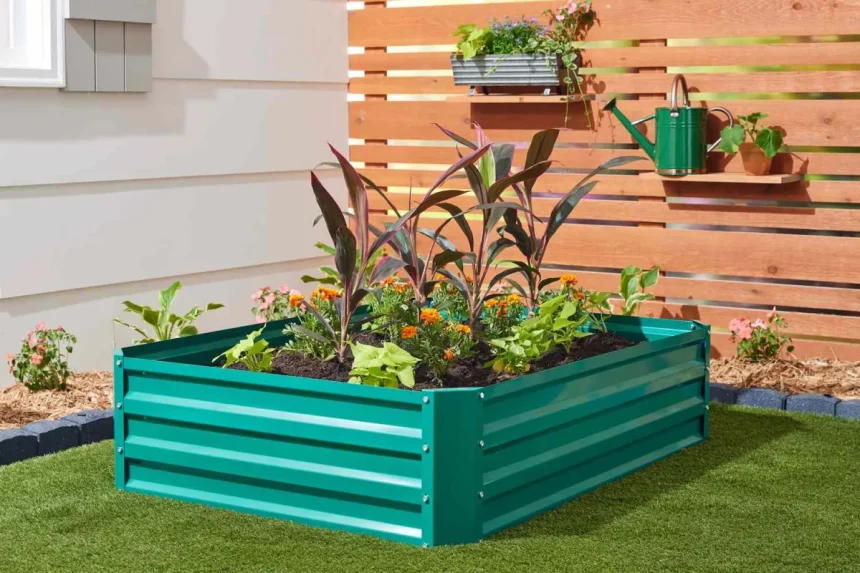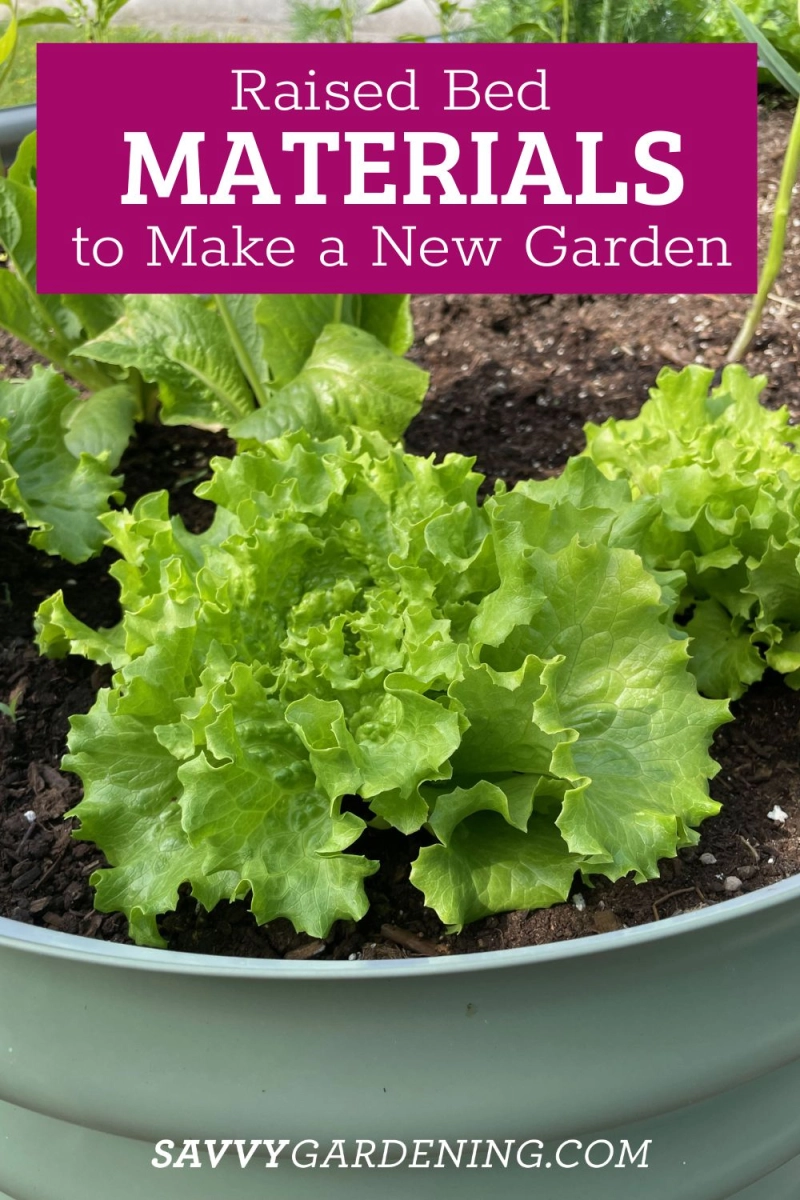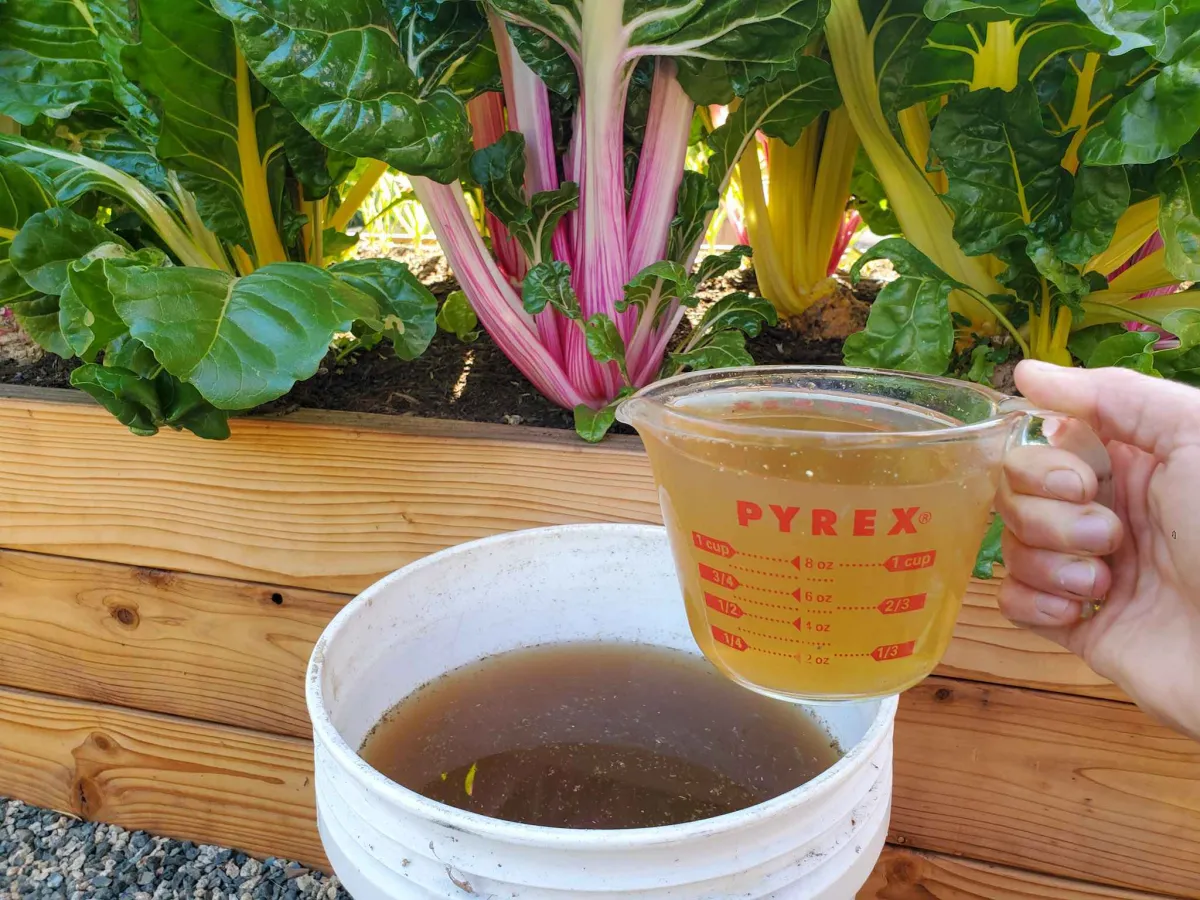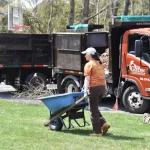Why Choose Raised Bed Gardening Benefits of Raised Beds
Raised bed gardening offers several clear benefits that make it a smart choice for both beginners and experienced gardeners. First, raised beds improve soil drainage and prevent soil compaction, letting your plants breathe and grow healthier roots. They also warm up faster in spring, which means you can start planting earlier in the season.
Another big plus is easier access. Raised beds sit above ground level, so you won’t have to bend over as much when planting, weeding, or harvesting—great for anyone with back issues or limited mobility. Plus, raised beds help keep weeds and pests under control since the growing area is contained and easier to manage.
You also get the chance to customize your soil with the best soil for raised beds, perfect for growing vegetables, herbs, or flowers in places where the native soil is poor. This makes raised beds a top pick for urban gardeners or those with tough soil conditions.
All these benefits combine to create a neat, efficient, and productive garden space that’s easy to maintain year after year.
Why Choose Raised Bed Gardening Who Should Use Raised Beds
Raised bed gardening works well for a lot of different folks. If you have limited space like a small backyard or even a balcony, raised beds let you grow a good amount of veggies or flowers without needing a big yard. They’re also perfect if your soil isn’t great—raised beds give you control over what goes in the ground, so you get better growing conditions.
Raised beds are great for beginners too. They’re easier to manage because you can keep the soil loose and well-drained, making it less tricky to grow healthy plants. Plus, if you have any mobility issues, raised beds reduce how much bending or kneeling you have to do, which makes gardening more comfortable.
Whether you want to start a vegetable garden, grow herbs, or try some organic raised bed gardening, raised beds fit well with different gardening goals and skill levels.
Step 1 Planning Your Raised Garden Bed Choosing the Right Location
Picking the right spot for your raised bed is key to success. You want an area that gets at least 6 to 8 hours of sunlight each day because most vegetables and herbs need plenty of sun to grow well. Look for a flat or gently sloping spot that drains well—standing water can hurt your plants.
Make sure it’s easy to access for watering, planting, and harvesting. Being close to a water source saves time and effort. Also, avoid spots with heavy foot traffic or close to trees whose roots might compete with your garden.
If you live in a windy area, consider adding a windbreak or placing your raised bed near a fence or wall for some protection. Good air circulation is still important though, to keep plants healthy.
By choosing the right location, you set a strong foundation for a thriving raised garden bed and a great vegetable gardening experience.
Step 1 Planning Your Raised Garden Bed Selecting the Ideal Size and Height
Choosing the right size and height for your raised bed garden is important for both comfort and plant health. Most raised beds are between 3 to 4 feet wide. This width lets you easily reach the center from either side without stepping into the bed, which helps keep soil from compacting. As for length, you can go with whatever fits your space, but common lengths range from 4 to 8 feet.
When it comes to height, 12 inches is the minimum to give plants enough soil depth, but 18 to 24 inches is better if you want to grow deeper-rooted vegetables like tomatoes or carrots. A taller bed also means less bending over, making gardening easier on your back and knees—which is a big plus if you’re starting with beginner raised bed tips for comfort and accessibility.
Keep in mind local climate and plant types when picking your bed’s size. For example, in drier areas, a taller bed with better soil drainage helps prevent root rot. Using the right raised bed materials also supports this by holding the shape and durability over time.
By planning your raised bed size and height properly, you set yourself up for easier gardening and healthier plants right from the start.
Materials for Raised Beds
Choosing the right materials for your raised bed is key to making it last and ensuring your plants thrive. Common options include:
- Wood: Cedar and redwood are popular because they resist rot naturally and last longer without chemicals. Avoid treated wood that can leach harmful chemicals into your soil.
- Composite lumber: Made from recycled wood and plastic, it’s durable and low maintenance but can be pricier.
- Metal: Galvanized steel beds look modern and hold up well, but they can heat up fast in hot climates.
- Stone or bricks: Great for a sturdy, permanent bed, though heavier and more expensive to build.
- Recycled materials: You can also use old pallets or repurposed wood, but make sure they’re safe and chemical-free.
Pick materials that fit your budget, garden style, and climate. The right choice makes planting easier and maintenance less of a headache. For more on practical gardening setups, check out our tips on gardening tips and tricks.
Step 2 Building Your Raised Garden Bed DIY vs Pre-Made Kits
When it comes to building your raised bed gardening setup, you have two main options: DIY raised bed gardening or buying a pre-made kit. Each has its perks depending on your skills, budget, and time.
DIY Raised Beds:
- You can customize size, shape, and materials to fit your space exactly.
- It’s often cheaper if you have tools and some know-how.
- Great if you want to use unique or reclaimed raised bed materials like cedar or composite wood.
- Takes more time and effort but gives you full control over your raised bed’s look and durability.
Pre-Made Kits:
- Quick and easy to assemble, usually with step-by-step instructions.
- Kits often come with all parts included—wood, screws, and sometimes soil liners.
- Ideal if you’re a beginner or want raised bed gardening without the hassle of construction.
- Tend to be pricier but save time and ensure a professional finish.
Consider your local weather too. For example, cedar kits resist rot well in humid US regions, while composite materials hold up nicely in drier climates. Picking the right method helps set up strong raised garden beds that last season after season.
Step 2 Building Your Raised Garden Bed Preparing the Base
Getting the base ready for your raised bed is crucial for good drainage and sturdy support. First, clear the area where you plan to place the bed. Remove grass, weeds, and any rocks or debris. This helps prevent unwanted plants from growing up into your garden.
Next, level the ground so your bed sits flat and stable. You can use a rake or a flat board to even out bumps. If your soil is compacted, loosen it a bit to improve drainage. For extra protection against weeds, consider laying down landscape fabric or cardboard before setting up the bed frame.
If drainage is a concern, especially in heavy clay soils common in some parts of the US, add a layer of coarse gravel at the bottom. This helps water flow through and stops roots from sitting in soggy soil.
Taking these simple steps in preparing the base will set you up for success with your raised bed gardening project.
Step 3 Filling Your Raised Bed with the Right Soil Ideal Soil Mix
Using the right soil mix in your raised bed is key to healthy plants and good harvests. The best soil for raised beds should be light, well-draining, and full of nutrients. A popular mix that works great is:
- 60% topsoil – provides a natural base
- 30% compost – adds organic matter and nutrients
- 10% coarse sand or perlite – improves drainage and airflow
This blend helps retain moisture without becoming soggy, making it perfect for raised bed vegetable gardening. If you want to go fully organic, use organic compost and avoid chemical fertilizers.
Remember to mix everything well before filling your bed. Avoid just dumping regular garden soil in since it can be too dense or lack nutrients. A proper soil mix sets you up for success by giving your plants the best start.
Step 3 Filling Your Raised Bed with the Right Soil Calculating Soil Needs
Once you know the size of your raised bed, it’s time to figure out how much soil you’ll need. To get it right, multiply the length by the width by the height of your bed (in feet) to find the volume in cubic feet. This tells you how much soil to buy or mix.
For example:
- A 4 ft long by 4 ft wide by 1 ft high bed = 16 cubic feet of soil.
Keep in mind most raised beds need at least 12 inches of soil for healthy roots, but deeper beds can hold more moisture and nutrients. When buying soil or compost, check the bag for volume measurements—usually in cubic feet or cubic yards—and plan accordingly.
If you’re creating your own soil mix for organic raised bed gardening, make sure you gather enough of each component (like compost, peat moss, and vermiculite) to fill the entire volume.
Pro tip:
- Buy a little extra soil to allow for settling over time.
- Consider starting with quality soil mix tailored for raised beds to maximize plant growth and minimize maintenance.
Knowing your soil needs upfront helps keep your raised bed full and your garden thriving.
Step 4 Planting Your Raised Garden Bed Best Plants for Raised Beds
Choosing the right plants is key to getting the most out of your raised bed gardening. Raised garden beds are great for a variety of plants, especially vegetables and herbs, because of better soil drainage and easier access. Here are some of the best plants for raised beds:
- Leafy Greens like lettuce, spinach, and kale: They grow fast and thrive in the loose soil of raised beds.
- Root Vegetables such as carrots, radishes, and beets: Raised beds let roots grow straight and deep without compacted soil getting in the way.
- Tomatoes and Peppers: These do well in raised beds where soil warms up faster and drains well.
- Herbs like basil, parsley, and thyme: They love the good drainage and can be planted close together, making the most of your space.
- Companion Plants: Try planting marigolds or nasturtiums alongside veggies to help keep pests away naturally.
- Bush Beans and Peas: These plants don’t need as deep soil but benefit from the easy care raised beds provide.
If you’re just starting, stick with easy-to-grow veggies and herbs suited to your region’s climate. This way, you’ll enjoy a productive garden without too much fuss. Raised bed vegetable gardening gives you more control over soil and plant care, making it perfect for beginners and seasoned gardeners alike.
Step 4 Planting Your Raised Garden Bed Planting Techniques
When it’s time to plant in your raised bed, using the right techniques can make a big difference in how well your garden grows. Here’s what I recommend for raised bed gardening success:
- Follow spacing guidelines: Raised bed plant spacing is important. Crowding plants can reduce airflow and increase disease risk. Check seed packets or gardening guides for ideal distances.
- Use companion planting: Pair plants that support each other, like tomatoes with basil or carrots with onions. This helps with pest control and boosts growth.
- Plant in blocks, not rows: Instead of long rows, plant in compact blocks. Raised beds are narrow, so block planting maximizes space and sunlight.
- Mix tall and short plants: Place taller plants on the north side of the bed so they don’t shade shorter ones.
- Start with healthy seedlings: If you’re not direct sowing seeds, use strong, disease-free seedlings for a better start.
- Mulch after planting: Adding organic mulch helps retain moisture, suppress weeds, and keep the soil temperature stable.
- Water gently once planted: Use a watering can with a fine rose or drip irrigation for even, gentle watering that won’t disturb young roots.
Stick to these planting techniques and your raised bed will be off to a strong start, setting you up for a healthy, productive growing season.
Step 4 Planting Your Raised Garden Bed Timing Your Planting
Timing is key for a successful raised bed garden. Since raised beds warm up faster in spring, you can often plant earlier than in-ground gardens. Here’s how to get your planting schedule right:
- Know your frost dates: Check the last expected frost date in your area and plan to plant tender vegetables and flowers after this date.
- Start seeds indoors: For a head start, start seeds indoors a few weeks before your last frost date. Transplant seedlings when the weather warms.
- Use succession planting: To keep your garden producing, plant crops in intervals. For example, sow quick-growers like lettuce every two weeks.
- Consider season extenders: Using row covers or cold frames can help you plant earlier or extend the growing season later into fall.
- Watch soil temperature: Some veggies like tomatoes won’t thrive until soil reaches 60°F or higher, so warm soil means better germination.
By timing your planting carefully, you’ll maximize yields and keep your raised bed productive throughout the growing season. For more tips on planting schedules and techniques, check out our gardening tips and tricks page.
Step 5 Maintaining Your Raised Garden Bed Watering Tips
Watering raised beds properly is key to keeping your plants healthy and thriving. Since raised beds drain faster than traditional garden beds, they often need more frequent watering. Here are some watering tips to keep in mind:
- Check soil moisture regularly: Stick your finger about an inch into the soil. If it feels dry, it’s time to water.
- Water deeply and evenly: Aim to soak the soil several inches down to encourage strong root growth.
- Use drip irrigation or soaker hoses: These help deliver water directly to the roots, reducing waste and keeping leaves dry to prevent disease.
- Water early in the day: Morning watering lets plants absorb moisture before the heat hits and reduces evaporation.
- Mulch your beds: Adding a layer of mulch keeps soil moist longer and reduces how often you need to water.
- Adjust for weather: During hot, dry spells, expect to water more often. After rain, give your bed a day or two before watering again.
Keeping these watering tips in mind will help your raised bed garden flourish, produce strong plants, and save water too. For more on garden care, check out our gardening tips and tricks.
Step 5 Maintaining Your Raised Garden Bed Weed and Pest Control
Keeping weeds and pests under control in your raised bed is key to a productive garden. Here’s how to stay on top of it:
- Weed regularly: Pull weeds as soon as you spot them. Raised beds make this easier because the soil is loose and more accessible.
- Use mulch: Applying organic mulch like straw or wood chips helps block weed seeds from sprouting and keeps soil moist.
- Companion planting: Plant flowers or herbs like marigolds, basil, or garlic alongside your veggies to naturally repel pests.
- Inspect plants daily: Look for signs of bugs or disease early, so you can act fast. Handpick pests like beetles or caterpillars when possible.
- Natural pest control: Use insecticidal soap or neem oil for tough infestations instead of harsh chemicals, keeping it safe for kids and pets.
- Rotate crops annually: This practice helps reduce soil-borne pests and diseases by not planting the same crops in the same spot every year.
Following these simple weed and pest control tips will keep your raised garden bed healthy and thriving all season long. For more helpful gardening tips and tricks, check out gardening tips and tricks.
Step 5 Maintaining Your Raised Garden Bed Soil Health and Fertilization
Keeping your soil healthy is key for a productive raised bed garden. Over time, nutrients get used up, so regular fertilization helps your plants grow strong. Here’s what I recommend for soil health and fertilization in raised bed gardening:
- Test your soil every season if you can. A simple soil test kit can tell you what nutrients you’re missing.
- Verwenden organic fertilizers like compost, worm castings, or aged manure to feed your plants naturally. They improve soil structure and encourage beneficial microbes.
- Spread a layer of compost or mulch on top to retain moisture and slowly release nutrients.
- Avoid over-fertilizing, especially with synthetic fertilizers. Too much can harm plants and leach out into the environment.
- Rotate your crops yearly to prevent nutrient depletion and reduce pest problems.
- Add cover crops or green manure during off-seasons to replenish nutrients and protect soil.
In beginner raised bed gardening, I find that combining compost with occasional organic fertilizer works best. This approach keeps soil rich, vibrant, and ready for your next planting season.
Häufige Fehler, die vermieden werden sollten
Raised bed gardening is simple, but a few common mistakes can slow your progress or reduce your harvest. Here’s what to watch out for:
- Choosing the wrong location
Avoid spots with poor sunlight or bad drainage. Most veggies need at least 6 hours of sun daily, so pick a sunny, level spot. - Using poor soil mix
Don’t just use garden dirt. Raised beds need loose, rich soil—a mix of compost, topsoil, and organic matter works best. - Overcrowding plants
Give your plants room to grow by following recommended raised bed plant spacing. Crowding can stunt growth and attract pests. - Neglecting watering
Raised beds dry out faster than ground soil. Regular, consistent watering is key, especially during hot, dry spells. - Ignoring weed control
Even raised beds can get weeds. Use mulch and keep an eye out so weeds don’t take over your veggies. - Skipping soil maintenance
Your soil needs nutrients. Add organic fertilizers or compost yearly to keep soil healthy and productive. - Starting too big
Beginners often try to build huge beds that are hard to manage. Start small and expand once you get the hang of it.
Avoiding these pitfalls will help you enjoy a thriving raised garden bed, full of healthy plants and fresh produce.
Aura’s Tips for a Beautiful and Productive Raised Garden
To make the most of your raised bed gardening, here are some simple tips from Aura that work well for gardeners across the U.S.:
- Use Companion Planting
Pair plants that help each other grow. For example, tomatoes and basil not only taste great together but also keep pests away naturally. - Keep Plant Spacing in Mind
Give your plants enough room to grow without overcrowding. This improves air circulation and reduces disease risk. - Water Smartly
Raised beds dry out faster, so water deeply but less frequently. Early morning watering helps plants absorb moisture better and prevents fungal problems. - Rotate Crops Every Season
Change what you plant in your raised bed each year to avoid soil depletion and reduce pests. - Top Off Soil Annually
Add a fresh layer of compost or organic matter every year to keep your soil rich and healthy. - Protect Your Garden
Use natural pest control methods like neem oil or insecticidal soap instead of harsh chemicals, keeping it organic and safe. - Add Mulch
Applying mulch keeps moisture in, stops weeds, and keeps your soil temperature steady—great for plant health.
For more helpful gardening hacks, check out our gardening tips and tricks to boost your outdoor space. Following these practical steps will help make your raised bed garden not just beautiful, but also packed with fresh veggies and flowers year after year.











